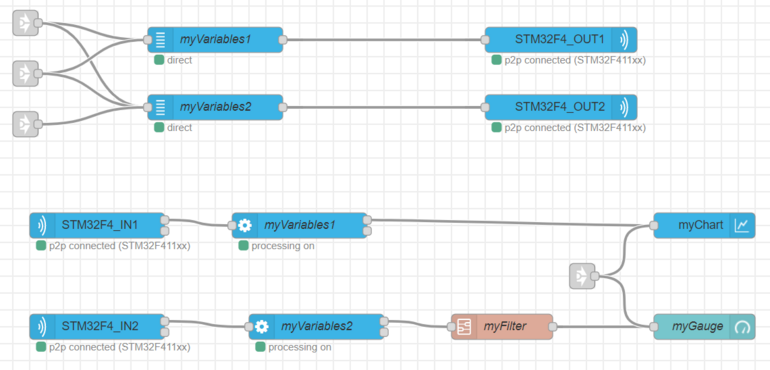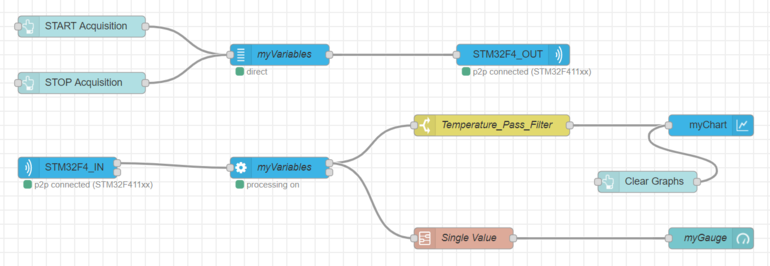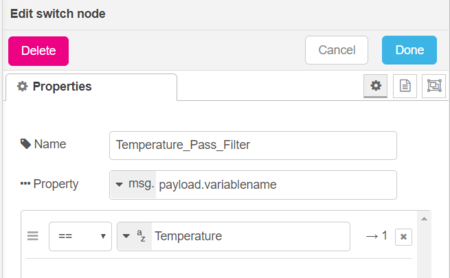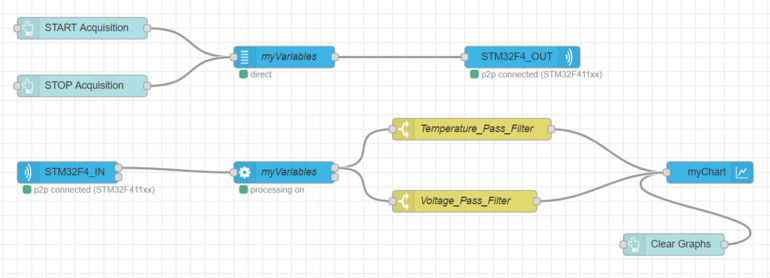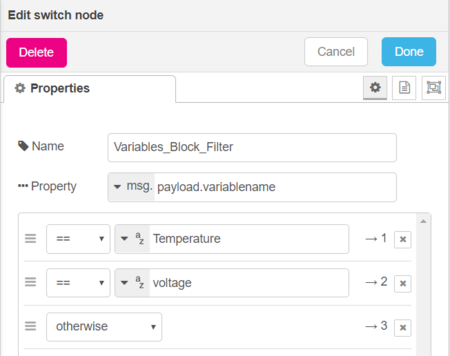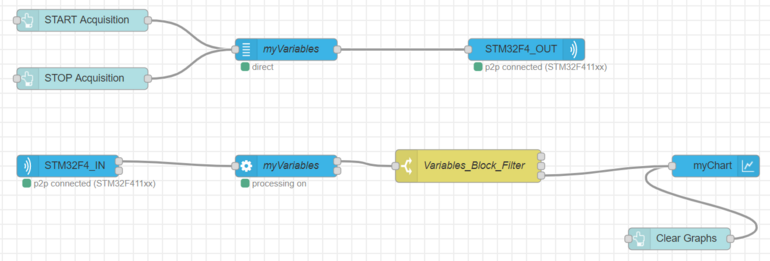How to filter or route a variable?
1. When is it useful to filter variables?
In some cases it is useful to filter some variables. For instance, when you perform post-processing you may want to plot only the post-processed variable and not the original one. This article provides some solutions to:
- hide useless variables
- plot some variables on different charts
- plot only the post-processed variable, and not the original one.
The following sections present two ways to perform this routing or filtering:
- create 2 groups of variables
- use switch nodes.
2. First solution: Create two groups of variables
You can create two different groups of variables (variable nodes), and consequently the same number of processing nodes. One can be connected to the gauge and the other to the chart.
3. Second solution: use switch node
3.1. Basic switch node configuration
You can use the “switch node” in a similar way to a filtering node (which lets a variable pass) on the output of the processing node. The switch node filters your variable on the following property: msg.payload.variablename and myVariableName.
Switch node configuration:
- Name - choose a name for your node
- Property - msg.payload.variablename is the condition to select a variable. Here you are going to select the needed variable by using its variable name.
- Condition - == yourVariableName if you want to filter only one variable. You can use other rules such as != yourVariableName to filter all variables except one variable.
Here is an example of a "switch node" configuration panel:
You can either use several serial or parallel “switch nodes” to filter multiple variables:
3.2. Serial switch nodes
If you want to block some variables you can use serial "switch nodes" with the != condition.
In this example, the first "switch node" is used to block the average temperature variable, and the second "switch node" to block the voltage variable. Thus, these two variables are not plotted on the graph.
3.3. Parallel switch nodes
If you want to select specific variables you can use "switch nodes" in parallel with the == condition.
In the previous flow, the temperature and voltage variables are each routed by a switch node. The two switch nodes are in parallel. Thus you can either plot the two variables in the same, or in different, graphs.
3.4. Switch nodes with several conditions
To block several variables you can use a single "switch node" with multiple outputs. You need to add several conditions. For instance, to plot all variables except the temperature and the voltage, we need 3 conditions:
- two "==" conditions
- one "otherwise" condition
Let's take a look at the following conditions configuration:
In order to suppress the temperature and voltage variables on your graph, plot the "otherwise" condition; that is, output 3 (see the following picture).
Conversely, if you want to allow the temperature and the voltage to pass, and not the other variables, you have to plot the outputs 1 and 2 to your graph, as in the following picture. You no longer need the "otherwise" condition.
